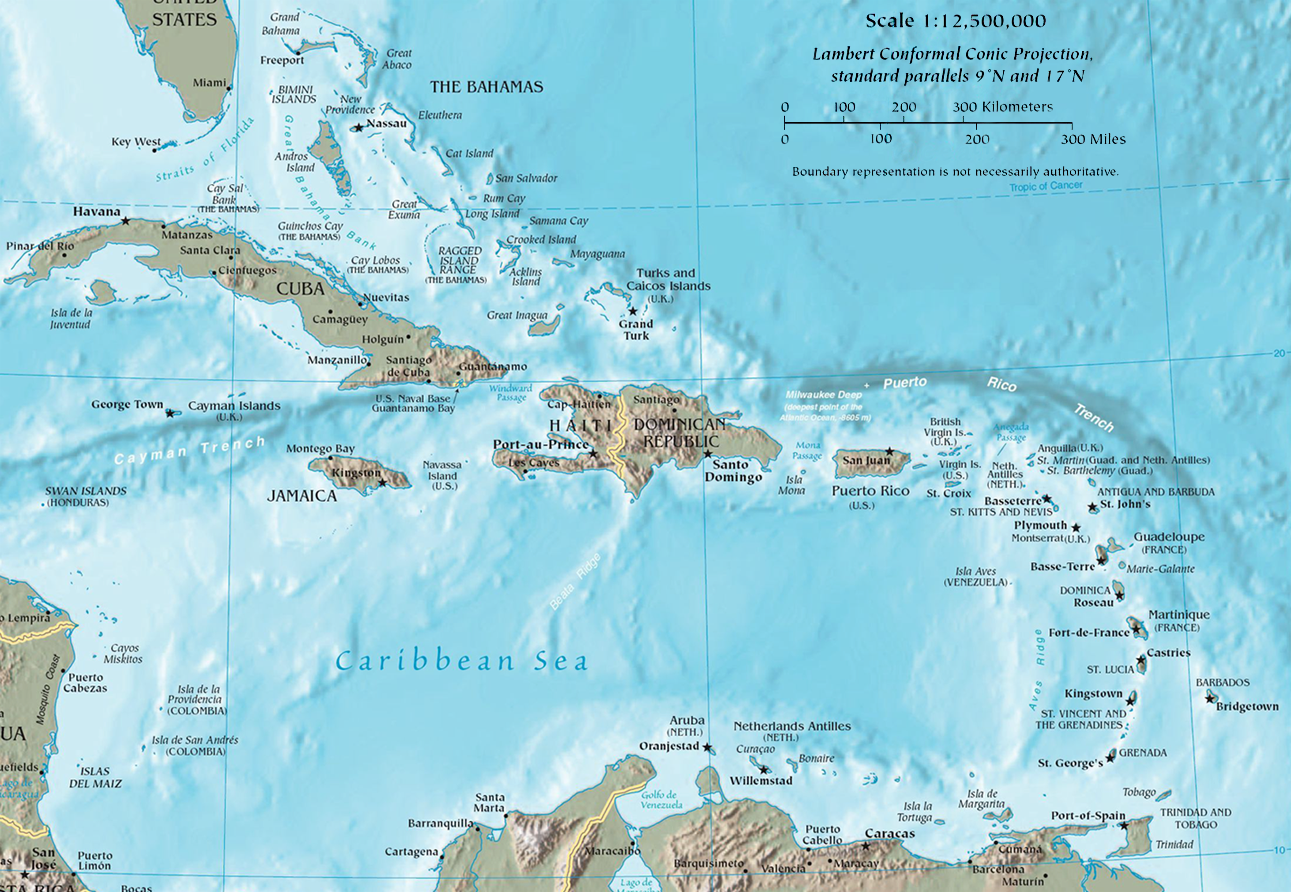|
Jeremy Jackson (scientist)
Jeremy Bradford Cook Jackson (born November 13, 1942) is an American ecologist, paleobiologist, and conservationist. He is an emeritus professor at the Scripps Institution of Oceanography, senior scientist emeritus at the Smithsonian Institution, and visiting scientist at the American Museum of Natural History Center for Biodiversity and Conservation. He studies threats and solutions to human impacts on the environment and the ecology and evolution of tropical seas. Jackson has more than 170 scientific publications and 11 books, with nearly 40,000 citations listed on Google Scholar. He is a powerfully engaging public speaker and has lectured widely about the environmental crisis, including his TED talk “How we wrecked the oceans’ that has been viewed over half a million times. Jackson is a Fellow of the American Association for the Advancement of Science and the American Academy of Arts and Sciences. He has received more than a dozen prizes and awards including the BBVA Inter ... [...More Info...] [...Related Items...] OR: [Wikipedia] [Google] [Baidu] |
National Museum Of Natural History
The National Museum of Natural History is a natural history museum administered by the Smithsonian Institution, located on the National Mall in Washington, D.C., United States. It has free admission and is open 364 days a year. In 2021, with 7.1 million visitors, it was the eighteenth most visited museum in the world and the second most visited natural history museum in the world after the Natural History Museum in London."The World's most popular museums", CNN.com, 22 June 2017. Opened in 1910, the museum on the National Mall was one of the first Smithsonian buildings constructed exclusively to hold the national collections and research facilities. The main building has an overall area of with of exhibition and public space and houses over 1,000 employees. The museum's collections contain over 145 million specimens of plants, animals, fossils, minerals, rocks, meteorites, human remains, and human cultural artifacts, the largest natural history collection in the world. ... [...More Info...] [...Related Items...] OR: [Wikipedia] [Google] [Baidu] |
International Society For Reef Studies
The International Coral Reef Society (ICRS; previously the International Society for Reef Studies) is an international, not-for profit, scientific society dedicated to the conservation of coral reefs through science and understanding. Founded in 1980, the primary objective of ICRS is the improvement of scientific knowledge and understanding of coral reefs, both living and fossil. Activities To achieve its objectives the ICRS prints and distributes the journal ''Coral Reefs'' as well as a Society newsletter, ''Reef Encounter''. The ICRS also holds annual meetings and co-sponsors other gatherings, symposia and conferences relating to coral reefs. Symposium ICRS helps organize the International Coral Reef Symposium (ICRS). The most recent symposium was held in 2022, in Bremen. The symposium has previously been held in Honolulu, Cairns, Queensland, Australia (2012); Fort Lauderdale, Florida, United States (2008), Okinawa, Japan (2004), Bali, Indonesia (2000), Panama City, Panama (19 ... [...More Info...] [...Related Items...] OR: [Wikipedia] [Google] [Baidu] |
Central American Isthmus
Central America ( es, América Central or ) is a subregion of the Americas. Its boundaries are defined as bordering the United States to the north, Colombia to the south, the Caribbean Sea to the east, and the Pacific Ocean to the west. Central America consists of eight countries: Belize, Costa Rica, El Salvador, Guatemala, Honduras, Mexico, Nicaragua, and Panama. Within Central America is the Mesoamerican biodiversity hotspot, which extends from northern Guatemala to central Panama. Due to the presence of several active geologic faults and the Central America Volcanic Arc, there is a high amount of seismic activity in the region, such as volcanic eruptions and earthquakes which has resulted in death, injury, and property damage. In the pre-Columbian era, Central America was inhabited by the indigenous peoples of Mesoamerica to the north and west and the Isthmo-Colombian peoples to the south and east. Following the Spanish expedition of Christopher Columbus' voyages ... [...More Info...] [...Related Items...] OR: [Wikipedia] [Google] [Baidu] |
International Coral Reef Initiative
The International Coral Reef Initiative (ICRI) is an informal partnership among nations, international organisations and non-government organisations to help protect coral reefs globally. It aims to implement Chapter 17 of Agenda 21, Aichi Target 10 of the Convention on Biological Diversity's 10-year Strategic Plan, and other relevant internationally agreed objectives and targets. It does so by: * raising global awareness on the plight of coral reefs around the world * promoting the sharing of best practices in coral reef management and building capacity of coral reef managers around the world * ensuring that coral reefs are included in relevant international deliberations. It is the "only global entity solely devoted to coral reefs".Report of the Secretary-General of the United Nations, August 2011 A/66/298 History ICRI was established in 1994 at the initiative of eight founding nations: Australia, France, Japan, Jamaica, the Philippines, Sweden, the United Kingdom, and the Unite ... [...More Info...] [...Related Items...] OR: [Wikipedia] [Google] [Baidu] |
National Center For Ecological Analysis And Synthesis
The National Center for Ecological Analysis and Synthesis (NCEAS) is a research center at the University of California, Santa Barbara, in Santa Barbara, California. Better known by its acronym, NCEAS (pronounced “n-seas”) opened in May 1995. Funding for NCEAS is diverse and includes supporters such as the U.S. National Science Foundation, the State of California, and the University of California, Santa Barbara. NCEAS supports cross-disciplinary research that analyzes and synthesizes existing data to address major fundamental issues in ecology and allied fields, and encourages the application of science to natural resource management and public policy decision making. To facilitate synthetic analysis, NCEAS advances new techniques in mathematical and geospatial modeling, dynamic simulation, and visualization of ecological systems through its Ecoinformatics program. Since its inception, the Center has hosted over 5,000 individuals and supported roughly 500 research projects, whic ... [...More Info...] [...Related Items...] OR: [Wikipedia] [Google] [Baidu] |
Green Sea Turtles
The green sea turtle (''Chelonia mydas''), also known as the green turtle, black (sea) turtle or Pacific green turtle, is a species of large sea turtle of the family Cheloniidae. It is the only species in the genus ''Chelonia''. Its range extends throughout tropical and subtropical seas around the world, with two distinct populations in the Atlantic and Pacific Oceans, but it is also found in the Indian Ocean. The common name refers to the usually green fat found beneath its carapace, not to the color of its carapace, which is olive to black. The dorsoventrally flattened body of ''C. mydas'' is covered by a large, teardrop-shaped carapace; it has a pair of large, paddle-like flippers. It is usually lightly colored, although in the eastern Pacific populations, parts of the carapace can be almost black. Unlike other members of its family, such as the hawksbill sea turtle, ''C. mydas'' is mostly herbivorous. The adults usually inhabit shallow lagoons, feeding mostly on various s ... [...More Info...] [...Related Items...] OR: [Wikipedia] [Google] [Baidu] |
Jamaica
Jamaica (; ) is an island country situated in the Caribbean Sea. Spanning in area, it is the third-largest island of the Greater Antilles and the Caribbean (after Cuba and Hispaniola). Jamaica lies about south of Cuba, and west of Hispaniola (the island containing the countries of Haiti and the Dominican Republic); the British Overseas Territory of the Cayman Islands lies some to the north-west. Originally inhabited by the indigenous Taíno peoples, the island came under Spanish rule following the arrival of Christopher Columbus in 1494. Many of the indigenous people either were killed or died of diseases, after which the Spanish brought large numbers of African slaves to Jamaica as labourers. The island remained a possession of Spain until 1655, when England (later Great Britain) conquered it, renaming it ''Jamaica''. Under British colonial rule Jamaica became a leading sugar exporter, with a plantation economy dependent on the African slaves and later their descenda ... [...More Info...] [...Related Items...] OR: [Wikipedia] [Google] [Baidu] |
Hurricane Allen
Hurricane Allen was a rare and extremely powerful Cape Verde hurricane that affected the Caribbean, eastern and northern Mexico, and southern Texas in August 1980. The first named storm and second tropical cyclone of the 1980 Atlantic hurricane season, it was the fifth most intense Atlantic hurricane on record in terms of barometric pressure, behind Hurricane Rita, the 1935 Labor Day hurricane, Hurricane Gilbert, and Hurricane Wilma. It was one of the few hurricanes to reach Category 5 status on the Saffir–Simpson Hurricane Scale on three occasions, and spent more time as a Category 5 than all but two other Atlantic hurricanes. Allen is the only hurricane in the recorded history of the Atlantic basin to achieve sustained winds of 190 mph (305 km/h),All wind speeds in the article are maximum sustained winds sustained for one minute, unless otherwise noted. thus making it the strongest Atlantic hurricane by wind speed. Until Hurricane Patricia in 201 ... [...More Info...] [...Related Items...] OR: [Wikipedia] [Google] [Baidu] |
Punctuated Equilibrium
In evolutionary biology, punctuated equilibrium (also called punctuated equilibria) is a theory that proposes that once a species appears in the fossil record, the population will become stable, showing little evolutionary change for most of its geological history. : ''Reprinted in'' * * This state of little or no morphological change is called ''stasis''. When significant evolutionary change occurs, the theory proposes that it is generally restricted to rare and geologically rapid events of branching speciation called cladogenesis. Cladogenesis is the process by which a species splits into two distinct species, rather than one species gradually transforming into another. Punctuated equilibrium is commonly contrasted with phyletic gradualism, the idea that evolution generally occurs uniformly by the steady and gradual transformation of whole lineages ( anagenesis). In 1972, paleontologists Niles Eldredge and Stephen Jay Gould published a landmark paper developing ... [...More Info...] [...Related Items...] OR: [Wikipedia] [Google] [Baidu] |
Brooksville, Maine
Brooksville is a town on Penobscot Bay in Hancock County, Maine, United States. As of the 2020 census, the town population was 935. It contains the villages of North Brooksville, South Brooksville (on Buck's Harbor), West Brooksville, Brooksville Corner, and Harborside (on Cape Rosier). History The Brooksville area was inhabited by Native Americans of the Wabanaki confederation since ancient times. According to the Brooksville Historical Society there is a story, difficult to confirm, that Englishmen massacred a Wabanaki village at Walker Pond some time between 1690 and 1704. Brooksville's first English settlers were John Wasson, Samuel Wasson and David Hawes, soldiers in the Revolutionary War. Incorporated on June 13, 1817, the town was formed from parts of Castine, Penobscot and Sedgwick. It was named Brooksville after Governor John Brooks of Massachusetts, which then governed Maine. The surface of the town abounds with granite, and several quarries were established ... [...More Info...] [...Related Items...] OR: [Wikipedia] [Google] [Baidu] |
Caribbean
The Caribbean (, ) ( es, El Caribe; french: la Caraïbe; ht, Karayib; nl, De Caraïben) is a region of the Americas that consists of the Caribbean Sea, its islands (some surrounded by the Caribbean Sea and some bordering both the Caribbean Sea and the North Atlantic Ocean) and the surrounding coasts. The region is southeast of the Gulf of Mexico and the North American mainland, east of Central America, and north of South America. Situated largely on the Caribbean Plate, the region has more than 700 islands, islets, reefs and cays (see the list of Caribbean islands). Island arcs delineate the eastern and northern edges of the Caribbean Sea: The Greater Antilles and the Lucayan Archipelago on the north and the Lesser Antilles and the on the south and east (which includes the Leeward Antilles). They form the West Indies with the nearby Lucayan Archipelago ( the Bahamas and Turks and Caicos Islands), which are considered to be part of the Caribbean despite not borde ... [...More Info...] [...Related Items...] OR: [Wikipedia] [Google] [Baidu] |




